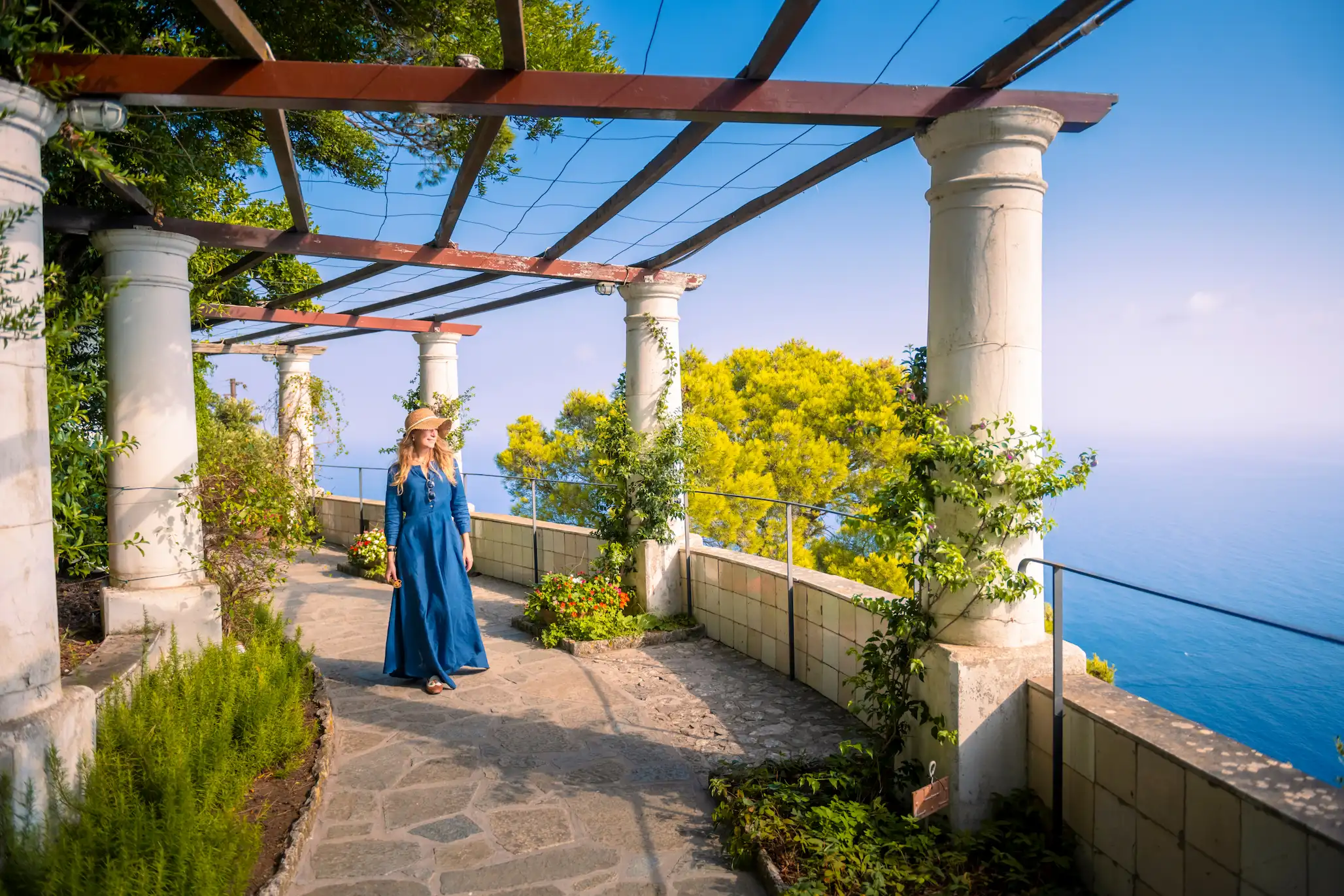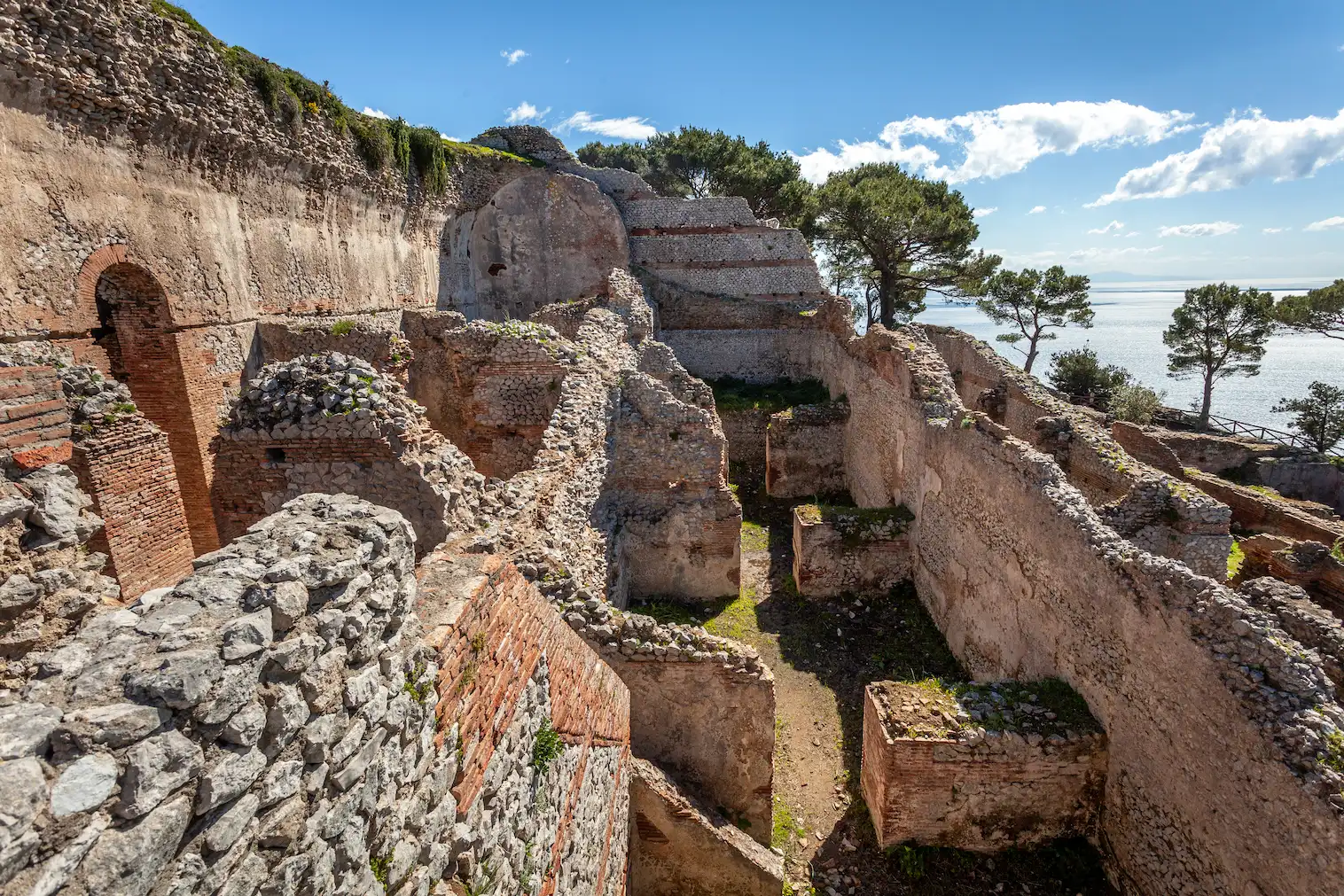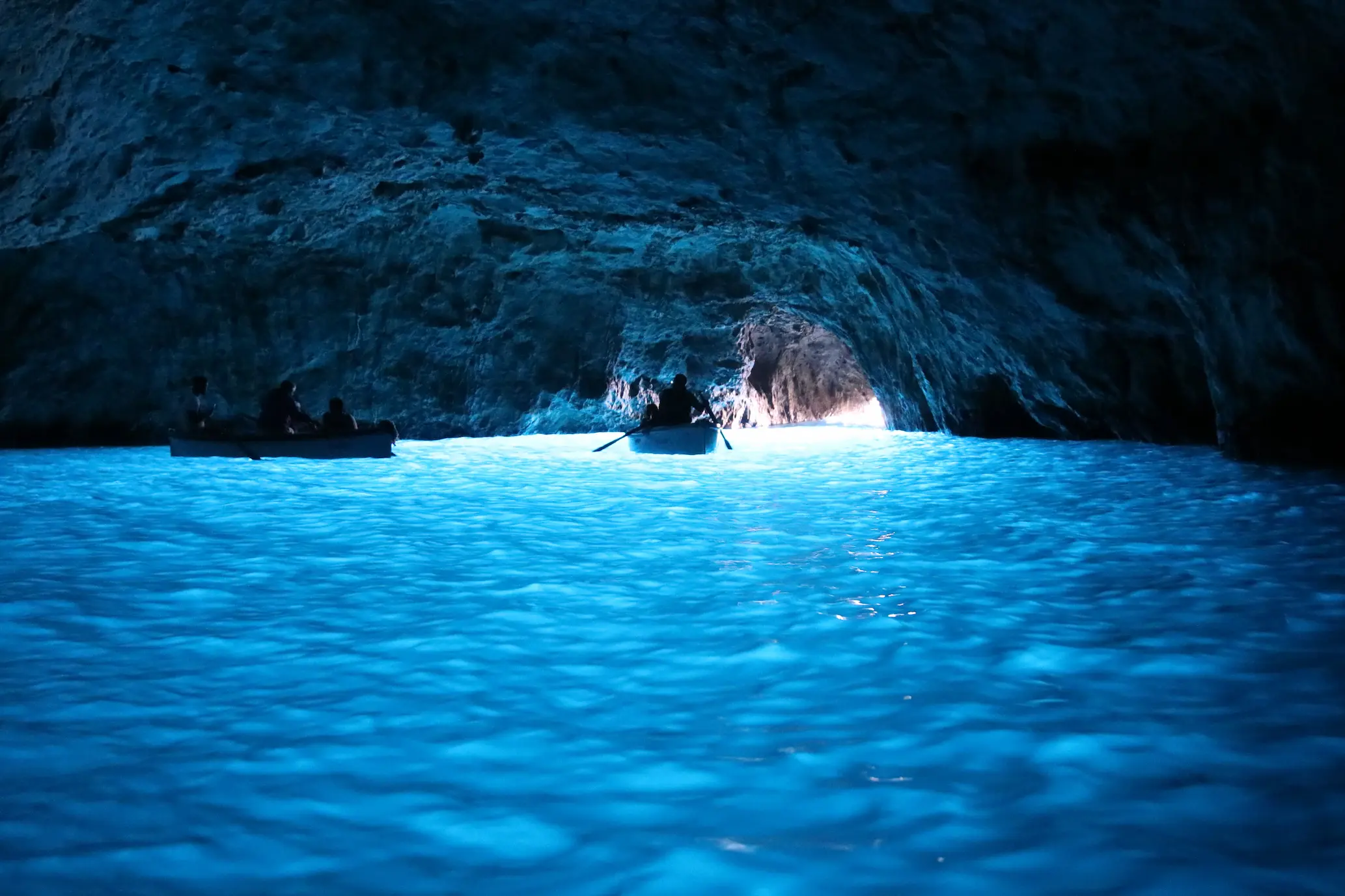Capri, a gem nestled in the Tyrrhenian Sea, is a blend of natural beauty, historical richness, and mythical allure. This enchanting island, located off the coast of Naples in Italy, has long captivated the imagination of travelers, artists, and writers. From its ancient roots to the modern-day splendor, Capri’s history is interwoven with fascinating myths that add to its enigmatic charm. Join us as we explore the intriguing past and legendary tales of Capri Island, making this an adventure through time and fantasy.
Ancient roots: from Prehistoric Times to Roman Glory
Prehistoric Inhabitants
Capri’s history stretches back to prehistoric times, with evidence of human habitation as early as the Paleolithic era. Archaeological findings, such as stone tools and remnants of ancient dwellings, indicate that the island has been a shelter for human life for thousands of years. These early inhabitants were likely drawn to Capri’s strategic location and abundant natural resources. These were some of the findings on Capri:
- Stone tools: used for hunting and gathering, these tools provide insight into the daily lives of Capri’s earliest settlers.
- Ancient dwellings: remnants of shelters suggest a semi-nomadic lifestyle, utilizing the island’s natural caves and rock formations.
- Burial sites: early graves and burial artifacts hint at the spiritual and cultural practices of these ancient communities.

The Greek influence
In the 8th century BC, Capri was colonized by the Greeks, who left a lasting impact on the island’s culture and architecture. The Greeks named the island “Kapros,” which means wild boar, an animal that once roamed the island’s lush landscapes (now the most typical inland animal is the goat!). Their influence is still visible in the island’s ruins and place names, blending seamlessly with the later Roman additions.
Greek contributions to Capri:
- Architecture: foundations of Greek-style buildings and temples can still be seen, reflecting the architectural prowess of the period.
- Place names: many locations on Capri retain their Greek names, preserving the island’s Hellenic heritage.
- Cultural practices: the introduction of Greek customs, such as symposiums (drinking parties) and religious rituals, influenced the social life of Capri.
Roman Splendor
Capri’s golden age began with the Romans, particularly during the reign of Emperor Augustus in the 1st century BC. Augustus fell in love with the island’s beauty and built several villas, turning Capri into a luxurious retreat for the Roman elite. His successor, Emperor Tiberius, further enhanced Capri’s fame by constructing the magnificent Villa Jovis. This grand palace, perched on the island’s cliffs, served as Tiberius’s primary residence and a center of power.
Roman Transformations:
- Villa Jovis: the most significant architectural achievement, Villa Jovis was a sprawling complex featuring opulent living quarters, bathhouses, and imperial offices.
- Aqueducts: advanced Roman engineering brought fresh water to the villas and settlements, demonstrating the Romans’ infrastructural ingenuity.
- Mosaics and Frescoes: artistic decorations adorned the villas, showcasing the wealth and cultural sophistication of their inhabitants.
Augustus’s Influence
Emperor Augustus’s fondness for Capri laid the foundation for the island’s transformation into a luxurious retreat. His contributions included the construction of several villas and the promotion of Capri as a fashionable destination for the Roman elite.
Augustus’s impact:
- Villa Damecuta: another notable residence attributed to Augustus, known for its strategic location and stunning views.
- Cultural hub: under Augustus, Capri became a center for art, literature, and philosophy, attracting prominent figures from across the Roman Empire.
- Infrastructure development: roads, aqueducts, and other public works improved the island’s accessibility and livability.
Capri’s ancient roots reveal a rich tapestry of human history, from the earliest settlers to the grandeur of the Roman Empire. The island’s strategic importance, combined with its natural beauty, made it a coveted location for rulers and elites. The blend of prehistoric remnants, Greek influences, and Roman splendor creates a captivating narrative that continues to draw visitors to this day.

Myths and Legends: The Enigmatic Tales of Capri
The Sirens’ call
One of the most enduring myths associated with Capri is that of the Sirens. According to Greek mythology, these enchanting creatures lived on the island and lured sailors to their doom with their irresistible songs. The Sirens were depicted as half-bird, half-woman creatures whose voices were so captivating that they could enchant anyone who heard them.
The Odyssey and the Sirens
Homer’s epic poem “The Odyssey” recounts how Odysseus, forewarned of the Sirens’ danger, took drastic measures to protect himself and his crew. He ordered his men to plug their ears with beeswax while he himself was tied to the mast of his ship, so he could safely experience their singing without succumbing to it.
The Sirens’ legend adds a mystical aura to Capri, although not specifically mentioned in the Odyssey, inviting visitors to imagine the ancient songs that once echoed across its shores. Standing on the island’s cliffs, one can almost hear the whispers of these mythical creatures in the wind.
The Legend of Tiberius’s Leap
Another captivating tale is that of Tiberius’s Leap (Salto di Tiberio). Legend has it that Emperor Tiberius, who ruled from his villa on Capri, would throw his enemies and disobedient servants from the cliffs of his villa into the sea below. This chilling myth contributes to the island’s mysterious allure and serves as a reminder of the power and ruthlessness of the Roman emperors.
The historical context:
- Tiberius’s Reign: known for his paranoia and harsh rule, making the legend of his cruelty plausible.
- Villa Jovis: the palace where Tiberius allegedly carried out these acts, adding a tangible connection to the legend.
Today, visitors can stand at the edge of Tiberius’s Leap and gaze down at the crystal-clear waters, contemplating the blend of history and legend that defines Capri. The view from the cliff is breathtaking, but it also evokes a sense of the island’s darker past.

Natural Wonders: the Blue Grotto and beyond
The Blue Grotto: a miraculous cavern
Capri is renowned for its natural wonders, with the Blue Grotto (Grotta Azzurra) being one of the most famous. This sea cave, accessible only by boat, is known for its mesmerizing blue light. The phenomenon occurs when sunlight passes through an underwater cavity and illuminates the cavern, creating an ethereal blue glow.
The Blue Grotto Experience:
- Entry by boat: visitors must lie flat in a small boat to enter the narrow opening of the cave.
- Inside the Grotto: the water glows with an otherworldly blue light, creating a magical and serene atmosphere.
The Blue Grotto has been a source of wonder since Roman times, with Emperor Tiberius reportedly using it as his private nymphaeum. The grotto’s enchanting beauty continues to captivate modern visitors, offering a glimpse into the natural marvels that have fascinated humans for centuries.

The Legend of Scugnizzo Gennarino
In addition to the captivating tales of Sirens and emperors, Capri is home to the charming legend of Scugnizzo Gennarino. This endearing story adds a touch of local color and whimsy to the island’s rich tapestry of myths and history.
Gennarino, known as the “scugnizzo” (a Neapolitan term for street urchin), was a young boy from Capri who embodied the spirit of adventure and mischief. According to legend, Gennarino was a free-spirited lad who loved to explore the island, climbing rocks and diving into the sea with the ease and grace of a native Caprese. His adventurous nature and charming antics made him a beloved figure among the locals.
The Statue of Gennarino
In honor of this legendary scugnizzo, a statue of Gennarino stands proudly at the entrance of Capri’s Marina Grande. The bronze statue depicts him waving cheerfully towards the sea, symbolizing the warm and welcoming spirit of the island. Visitors often stop to take photos with Gennarino, finding his joyful expression a delightful introduction to their Capri adventure.
The Faraglioni: Guardians of Capri
The iconic Faraglioni rock formations are another natural marvel that defines Capri’s landscape. These towering limestone stacks rise majestically from the sea and are named Stella, Faraglione di Mezzo, and Faraglione di Fuori. According to legend, these rocks are the petrified remains of a mythical giant who once protected the island.
The Faraglioni Legend:
- Mythical Giant: the rocks are believed to be the remains of a giant who stood guard over Capri, protecting it from invaders.
- Romantic Tradition: sailing through the arch of Faraglione di Mezzo is considered a good luck charm for couples, symbolizing eternal love and happiness.
Sailing through the arch of Faraglione di Mezzo is an unforgettable experience, offering stunning views and a sense of connection to the island’s mythological past. The Faraglioni stand as silent sentinels, embodying both the natural beauty and the legendary stories of Capri.

Embrace the Magic of Capri with Iamme Ia!
And there you have it—a detailed guide to the history and myths behind Capri, including essential insights into its prehistoric origins, Greek influence, Roman splendor, and captivating legends. As you prepare to explore this enchanting island, remember that the beauty of Capri is best experienced up close and personal.
Who better to help you navigate this breathtaking region than Iamme Ia!, your expert companion for all things travel in this beautiful part of Italy? Connecting with us is easy. For more information on our tours, to make bookings, or to discuss your upcoming travel plans, please visit our tour pages or contact page on our website.
If you find yourself wandering the charming streets of Sorrento, feel free to stop by our office at Piazza Torquato Tasso 16, where our friendly staff is eager to help you plan your next unforgettable adventure. As a proud Gray Line licensee, Iamme Ia! has been committed since 2014 to not only showcasing the stunning landscapes and rich culture of the Amalfi Coast but also to providing a narrative that weaves together breathtaking views, diverse experiences, and memorable moments.
With Iamme Ia!, your journey through Italy will be more than just a visit—it will be a profound engagement with the heart and soul of the region. Let us turn your trip into an experience of a lifetime.